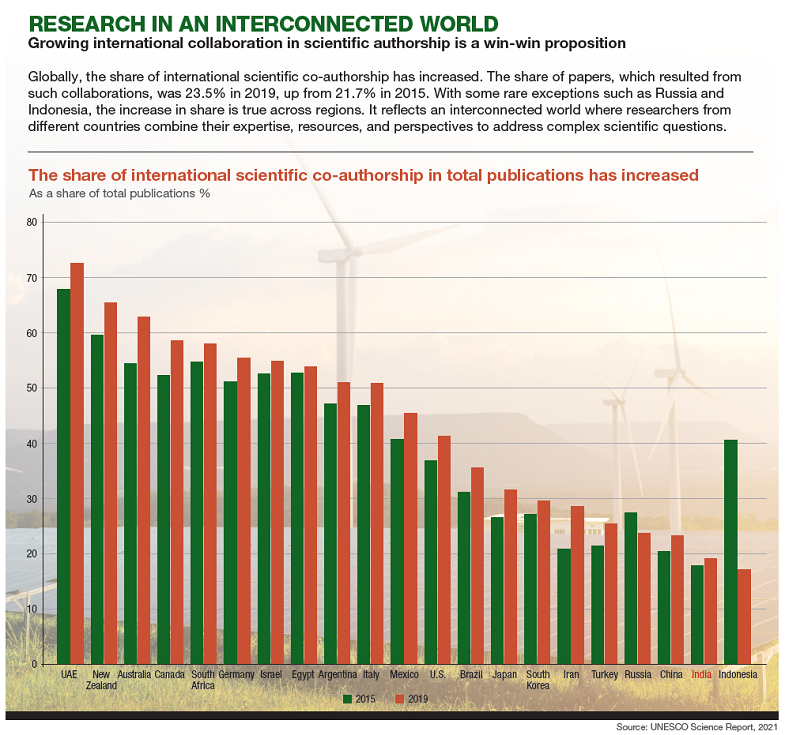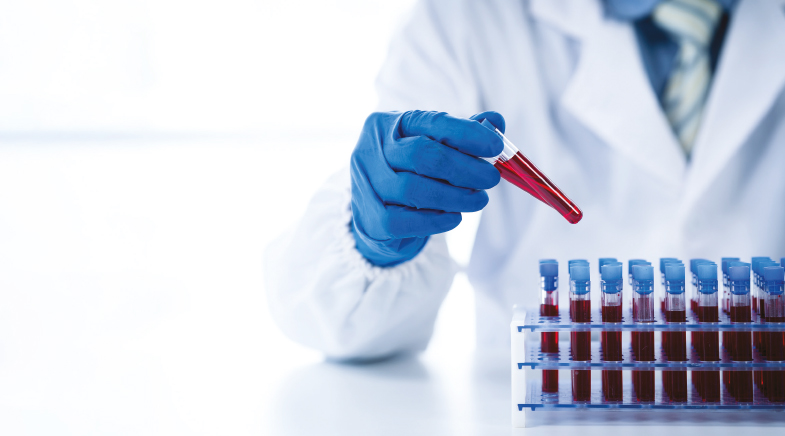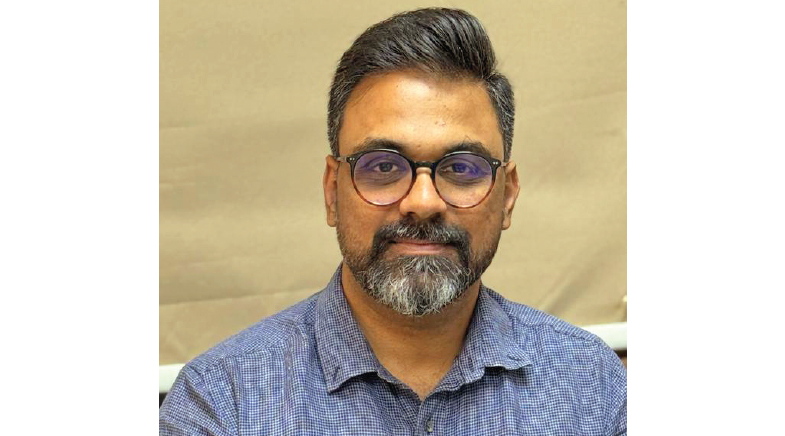Innovation 2024 and beyond: Four key trends
-
- from Shaastra :: vol 03 issue 01 :: Jan - Feb 2024

Four factors, including sustainability and social responsibility, will drive R&D over the next decade and beyond.
The world was entering a new era at the start of January 2021. The COVID-19 pandemic had devastated the world, but a messenger ribonucleic acid (mRNA) vaccine had just been approved for emergency use in the United Kingdom and the United States. Never in the history of medicine had a vaccine been developed and approved, even for emergency use, so quickly. Over the next two years, mRNA and other vaccines reduced the severity of COVID infection for hundreds of millions of people. The development of the mRNA platform technology was considered so important by the scientific community that its developers got the Nobel Prize in Physiology or Medicine in 2023.
The development of the vaccine showed, without ambiguity, the value of continuing to invest in the creation of new knowledge and its commercial exploitation. The mRNA vaccine would not have been commercialised so quickly without the technologies developed in the years preceding the pandemic. If the COVID pandemic had come around a decade earlier, the world’s scientists could not have sequenced the virus so quickly, shared information so widely, or used such efficient methods for expressing the protein and delivering it to the cells. While the wider public was focusing on major political events, scientists and engineers were making quiet but rapid progress on technologies that would save over a hundred million lives and a few trillion dollars.
AN ERA OF HIGH SCIENCE
The 2010s had been a rich decade for science and technology. It was the decade of the Higgs boson, gravitational waves, gene editing, immunotherapy, gene therapy, innovative space probes, and Artificial Intelligence (AI). As the next decade began with the pandemic, it promised to be even more significant. By then, the technologies of the 2010s had reached a point of readiness for commercialisation.
Meanwhile, several new ideas were also appearing on the horizon. In 2021, software powered by AI showed the potential to solve an intractable but significant problem: predicting the structure of a protein from its amino acid sequence. In 2022, the James Webb Space Telescope set up shop at the second Lagrange point, 1.5 million kilometres from Earth, promising a decade of spectacular discoveries in space science.
Generative AI, of which ChatGPT is one component, is set to create new paradigms in art, music and literature.
The year 2023 showed the power of Generative AI, as the software program ChatGPT went further than any software had gone till then – to produce content that human beings could not readily recognise as having been created by a machine. ChatGPT, however, is a small part of Generative AI, which promises – or threatens, depending on your point of view – to create new paradigms in art, music and literature. These three developments in three years kickstarted a decade that now promises to be even more memorable for science and technology than the previous one was. But then, scientists will have more urgent problems to solve as well.

KEY DRIVERS OF TECHNOLOGY
The pandemic accelerated the use of AI tools and international collaboration in the creation of new science and technology. It also demonstrated the need for social responsibility in research and development, as leaders were pressured to provide vaccine access to everyone around the world. AI tools are key drivers of technology now, as are international collaborations. Modern R&D continues to be tempered by the need for social responsibility. As the decade advances, climate change will add a fourth member to the list of forces that will steer science and technology.
Climate change will remain the most important driver of innovation and development over the next decade.
COVID-19 had caught the world unawares, although many scientists and some industry leaders had sensed – and warned – that a pandemic of such magnitude could wrack the world at any time. Rapid climate change, on the other hand, is a slow-motion train wreck, a disaster that is progressing inch by inch and in full view of everyone in the world, forcing change in every aspect of people’s lives. It will remain, for the rest of the decade and beyond, the most important driver of innovation and development. It will force governments to invest in fundamental science; develop new energy systems to reduce fossil fuel use; strategise more equitable development; make healthcare a priority; and create more sustainable manufacturing processes. It will force AI tools to be used to streamline every aspect of life, not just research. It will make global cooperation a necessity.
Sustainability began to be felt as a force in R&D by the early years of the century, when pollution increased widely and scientists started speaking about the dangers of rapid climate change. However, executives in developed countries felt sustainability was a headwind rather than a tailwind. They argued that strict sustainability practices put companies in the U.S. and Europe at a disadvantage compared to those in China and India, where pollution laws were absent or not so strict. Over a decade, CEOs realised that a well-managed sustainability programme in the company could reduce the use of resources and energy, thereby making their products more competitive. As borne out by several global surveys, a substantial number of CEOs now perceive sustainability practices as a tailwind rather than a headwind, as an opportunity rather than a problem.

The climate emergency is triggering research into renewable energy, batteries, improving the efficiency of buildings (bit.ly/shaastra-buildings), vehicles, supply chains, and so on. It is reinventing manufacturing, making processes continuous (bit.ly/shaastra-manufacture), less polluting and less carbon-intensive. Climate change affects the poor disproportionately, and its social and economic impact is now a major part of academic research. On the other hand, expensive devices – for medical diagnosis, to mention one example – are being reinvented for wider use in rural areas and in less-developed countries.
SIX DEFINING AREAS
The six sections that follow illustrate all these trends in ample measure. Agricultural scientists are using contemporary methods of gene editing to develop crops that can withstand more heat and drought, while using less water and fertilisers. Medical scientists also use gene editing, but to find a cure for diseases – common and uncommon, the latter including rare genetic disorders that have never roused the interest of pharmaceutical companies. New manufacturing techniques are making chemical manufacturing plants – a big emitter of carbon dioxide – less polluting and more carbon-efficient.
Medical scientists are using gene editing to, among other things, find a cure for rare genetic disorders that have never roused the interest of pharma firms.
Agriculture, healthcare and chemical industries together are worth more than $25 trillion. They are key to a good quality of life, and therefore deserve a close look. Our special section also looks deeply at three platform technologies – new materials, photonics, and AI – that will influence the development of many other key sectors. New materials help make the world a greener place, promising a wide range of products from efficient solar cells to precise drug delivery systems. Photonics is driving the development of better communications, computing, and medical devices. AI has now become key to improving almost every human activity, and its development is a major focus of research in advanced nations. AI is rewriting the methods of doing science as well.

These six sections provide a snapshot of contemporary research in some key areas. They also offer a sneak peek into stories that will likely be featured in science and technology magazines in the next decade, including in Shaastra.
See also:
Precision agriculture will feed the world, sustainably
A healthcare revolution is in the works
The chemical industry is undertaking rapid reform
Materials science: harnessing the power of the ultra-small
Have a
story idea?
Tell us.
Do you have a recent research paper or an idea for a science/technology-themed article that you'd like to tell us about?
GET IN TOUCH














